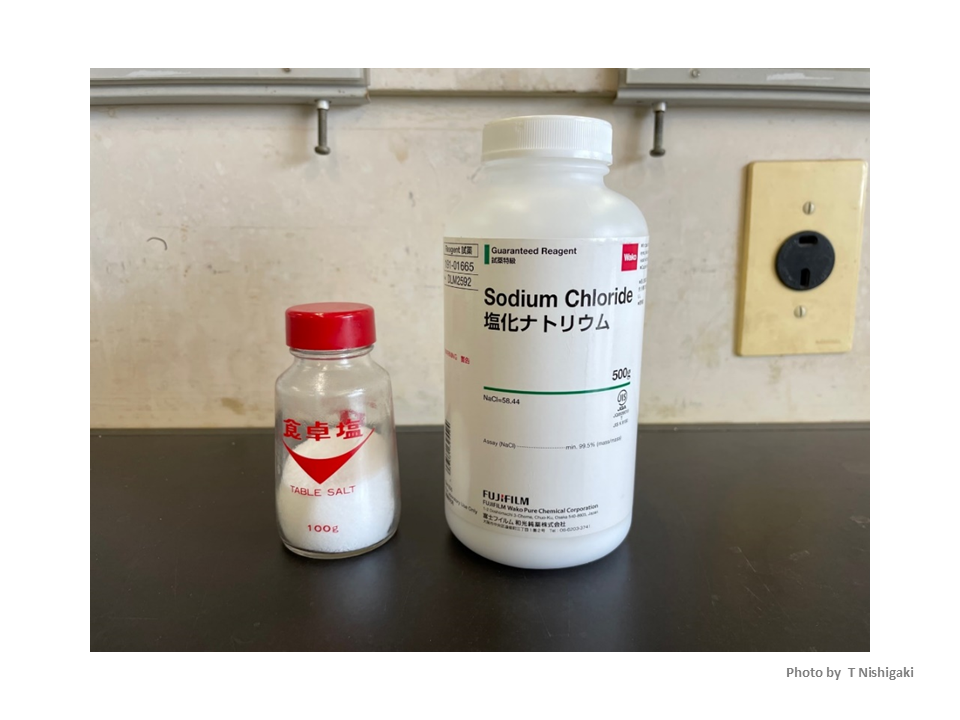Pick Up
1223. Easy Soil Analysis Using Table Salt

1223. Easy Soil Analysis Using Table Salt
Recently, not only DIY stores but also 100-yen shops have well-stocked gardening sections, making it easy for anyone to start gardening. You can find bags of soil with names like Akadama Soil, Kanuma Soil, and Masado Soil. There are also soils blended with fertilizers for specific vegetables, such as "Tomato Soil" or "Herb Soil," which is very convenient for beginners. But if you step outside and look at the ground, you’ll see soil of all kinds, without any labels. You can easily notice differences in texture and color, but it’s hard to tell which soil is good for growing plants.
While nutrient-rich soil is best for plants, harmful bacteria might be lurking in the soil. That’s why it’s important to bring soil back to a lab, analyze it using various machines and chemicals, and find out its "health" and "personality." However, if you don’t have the right equipment, analyzing soil can be very difficult. That’s why I’ve been working on developing a simple soil analysis method that anyone can easily perform. Today, I’d like to share the story behind that development.
Why Do We Need to Analyze Soil?
Soil has the ability to hold nutrients. If this ability is weak, nutrients from fertilizers will wash away with rainwater. On the other hand, if it’s too strong, the nutrients won’t be released from the soil, making the fertilizer less effective. Phosphate ions, which are essential for plant growth, tend to stick to soil easily. That’s why we use a measure called "phosphorus retention capacity (PRC)" to determine how strongly phosphate ions stick to the soil. Knowing the PRC of your field helps you decide how much phosphate fertilizer to apply. However, measuring PRC usually requires dangerous chemicals and expensive equipment. This makes it difficult for many farmers to analyze their soil.
Finding a Simple Way to Analyze Soil
If you’ve ever grown plants at home, you might have experienced them wilting when you forgot to water them. If you leave them alone, the plants will eventually die, and the soil will become dry. But even dry soil still holds a tiny amount of moisture. You might have had the experience of eating rice crackers that have gone soft because they absorbed moisture from the air. Soil works the same way — even when it looks dry, it retains a small amount of moisture from the air. The amount of moisture left in the soil depends on the type of soil. This is because soil particles have tiny "hands" on their surfaces that hold onto water. Soil with more "hands" can hold more moisture even when it’s dry. These "hands" also play a key role in holding phosphate ions. In other words, measuring the amount of moisture in dried soil might help us estimate its PRC.
A Problem with Measuring Moisture
There was one problem. Every time I measured the moisture content of soil, the results were slightly different. The cause was humidity in the air. In Japan, the air is dry in winter and humid in summer. Just like laundry dries slowly during the rainy season, soil absorbs more moisture when the air is humid and loses moisture when the air is dry. If the soil’s moisture level keeps changing based on the weather, it can’t be used to estimate PRC. To solve this, I needed to control the humidity in the air when drying the soil.
A Hint from a Lecture
I found a solution while listening to a lecture about how plant leaves wilt in dry air. The speaker mentioned an experiment where they used a saturated salt solution to control the humidity inside a sealed container. That’s when I learned that a saturated salt solution can keep the humidity constant inside a container. I reviewed more research papers and found that a saturated solution of table salt (sodium chloride) keeps the humidity stable regardless of temperature. Since table salt is cheap and easy to get, I decided to give it a try. After some trial and error, I discovered that I could reduce variations in moisture levels with this simple method:
"Place air-dried soil in a sealed container (like Tupperware) along with a saturated salt solution and leave it for a week."
That’s it! With this simple method, you can prepare soil with a consistent level of dryness anytime, anywhere. I also found that the moisture level of soil prepared this way could accurately estimate its PRC.
A Simple Soil Analysis Method for Everyone
That’s how I developed a soil analysis method using ordinary table salt. Because it doesn’t require special equipment or dangerous chemicals, this method is especially useful for farmers in developing countries where research facilities are limited. In Madagascar, efforts are already underway to spread this method to local farmers. In Japan, it could be used in school science classes or even as a homework theme during summer vacation for students. I hope that this simple method will help someone, somewhere in the world.
